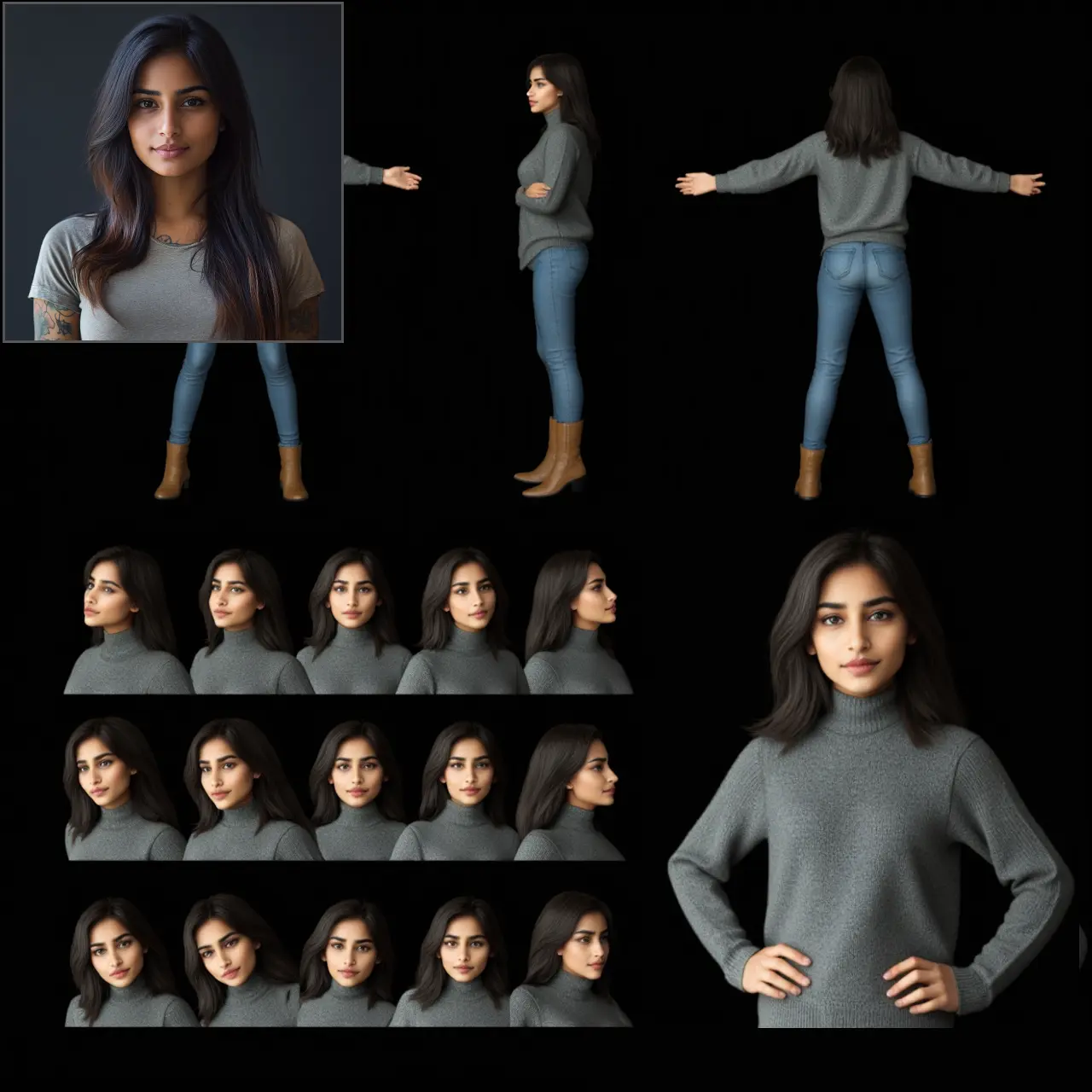ComfyUI Node: LDSR Upscale
LDSRUpscale
CategoryFlowty LDSR
flowtyone (Account age: 558days) Extension
ComfyUI-Flowty-LDSR Latest Updated
2024-06-14 Github Stars
0.23K
How to Install ComfyUI-Flowty-LDSR
Install this extension via the ComfyUI Manager by searching for ComfyUI-Flowty-LDSR- 1. Click the Manager button in the main menu
- 2. Select Custom Nodes Manager button
- 3. Enter ComfyUI-Flowty-LDSR in the search bar
Visit ComfyUI Online for ready-to-use ComfyUI environment
- Free trial available
- 16GB VRAM to 80GB VRAM GPU machines
- 400+ preloaded models/nodes
- Freedom to upload custom models/nodes
- 200+ ready-to-run workflows
- 100% private workspace with up to 200GB storage
- Dedicated Support
LDSR Upscale Description
Enhance image resolution using advanced LDSR techniques for high-quality upscaling with configurable parameters.
LDSR Upscale:
The LDSRUpscale node is designed to enhance the resolution of images using advanced Latent Diffusion Super Resolution (LDSR) techniques. This node leverages a sophisticated model to upscale images, providing high-quality results that maintain the integrity and details of the original image. The primary goal of this node is to offer a seamless and efficient way to improve image resolution, making it an invaluable tool for AI artists who need to upscale their artwork without compromising on quality. By utilizing various configurable parameters, the LDSRUpscale node allows you to fine-tune the upscaling process to meet specific needs, ensuring optimal results for different types of images.
LDSR Upscale Input Parameters:
upscale_model
This parameter specifies the model to be used for the upscaling process. The model is pre-trained to handle the super-resolution task, ensuring that the upscaled images retain high quality and detail. The choice of model can significantly impact the final output, so selecting the appropriate model for your specific needs is crucial.
images
This parameter accepts the images that you want to upscale. It is essential to provide high-quality input images to achieve the best upscaling results. The images should be in a format that the node can process, typically standard image formats like JPEG or PNG.
steps
This parameter determines the number of steps the model will take during the upscaling process. The available options are 25, 50, 100, 250, 500, and 1000, with a default value of 100. Higher step values generally result in better quality upscaling but will require more processing time. Choosing the right number of steps depends on the desired balance between quality and processing time.
pre_downscale
This parameter allows you to downscale the input images before the upscaling process. The options are 'None', '1/2', and '1/4', with a default value of 'None'. Pre-downscaling can be useful for reducing the size of very large images, making the upscaling process more efficient. However, it may also result in a loss of some details.
post_downscale
This parameter specifies the downscaling method to be applied after the upscaling process. The options are 'None', 'Original Size', '1/2', and '1/4', with a default value of 'None'. Post-downscaling can help in adjusting the final output size to match specific requirements, such as fitting the upscaled image back to its original dimensions.
downsample_method
This parameter determines the method used for downscaling, with options 'Nearest' and 'Lanczos', and a default value of 'Lanczos'. The 'Lanczos' method is generally preferred for its ability to preserve image quality during downscaling, while the 'Nearest' method is faster but may result in lower quality.
LDSR Upscale Output Parameters:
images
The output parameter images contains the upscaled images. These images are the result of the upscaling process and are provided in a format that can be easily used for further processing or display. The upscaled images retain the high quality and details of the original input images, enhanced by the LDSR model.
LDSR Upscale Usage Tips:
- For best results, use high-quality input images and select an appropriate upscale model that matches your specific needs.
- Adjust the
stepsparameter based on the desired balance between image quality and processing time. Higher steps generally yield better results but take longer to process. - Utilize the
pre_downscaleandpost_downscaleparameters to manage the size of your images before and after upscaling, especially if working with very large images. - Choose the
downsample_methodthat best suits your quality requirements. The 'Lanczos' method is recommended for preserving image quality during downscaling.
LDSR Upscale Common Errors and Solutions:
"Model not found"
- Explanation: This error occurs when the specified upscale model is not available or cannot be loaded.
- Solution: Ensure that the model name is correct and that the model is properly installed and accessible by the node.
"Invalid image format"
- Explanation: This error indicates that the input images are in a format that the node cannot process.
- Solution: Convert your images to a standard format such as JPEG or PNG before using them as input.
"Insufficient steps"
- Explanation: This error occurs when the number of steps specified is too low to produce a meaningful upscaled image.
- Solution: Increase the number of steps to at least 100 to ensure adequate processing for high-quality results.
"Downscaling method not supported"
- Explanation: This error indicates that the specified downscaling method is not recognized by the node.
- Solution: Verify that the downscaling method is either 'Nearest' or 'Lanczos' and adjust the parameter accordingly.
LDSR Upscale Related Nodes
RunComfy is the premier ComfyUI platform, offering ComfyUI online environment and services, along with ComfyUI workflows featuring stunning visuals. RunComfy also provides AI Models, enabling artists to harness the latest AI tools to create incredible art.




